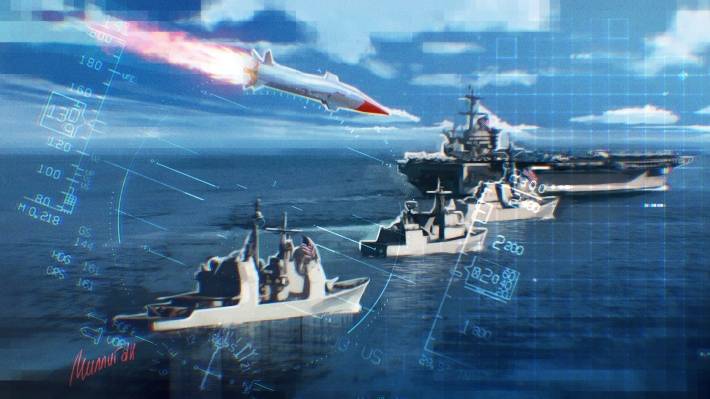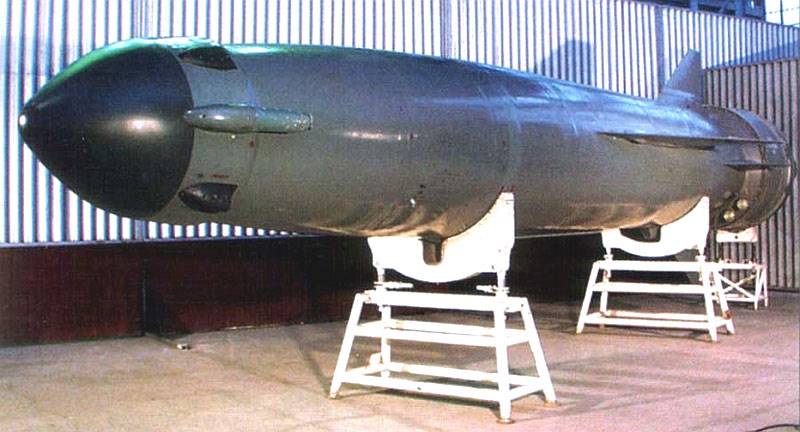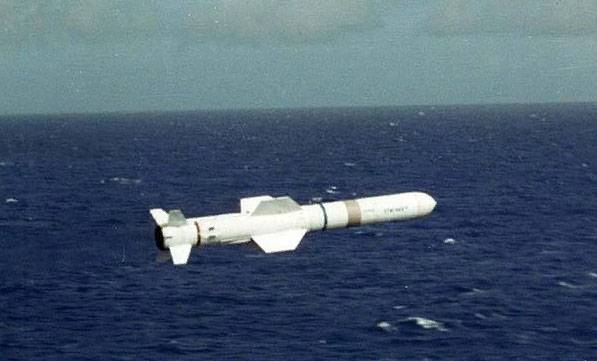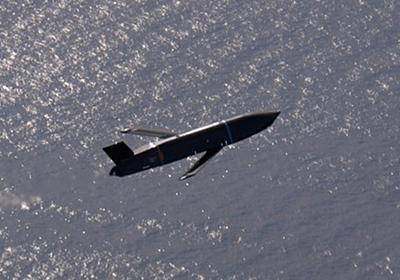Anti-ship missile: hypersonic or subsonic?
The ultimate weapon?
The advent of the new Zircon anti-ship missile caused the effect of an “exploding bomb” in the media and on numerous online forums, even those far from military topics. Of course, the appearance of a rocket with such characteristics is a big technological step. Immediately many dubbed Zircon as “absolute weapon”, Which completely changes all the strategies of“ war at sea ”. However, is this really possible and can this RCC give the decisive advantage of the Russian Navy?

Here you should step back from the topic and delve into history development of anti-ship missiles. It should be noted that the development of anti-ship missiles went in two ways: the Soviet one with its monstrous supersonic missiles and the NATO one with its small-sized subsonic missiles. Of course, this is due to the different specifics of the tasks that set fleet on opposite sides of the Iron Curtain. Where did the Soviet admirals want to acquire an effective and cheap means of fighting the superior enemy fleet and in the opposite situation with the American admirals with their mighty deck aviation, who were tasked with protecting the long sea lanes in the North Atlantic.


It is safe to say that the Zircon anti-ship missile is a logical continuation of the development of the Soviet way. Since the modern fleet of Russia is the heir to the Soviet Navy, the Russian Navy naturally inherited the concept of developing missile weapons. But how does this concept fit today's realities?
Let's start with the “sickest” problem, namely the issue of reconnaissance and target designation.
For most readers of the Military Review, it is not a secret that the problem of reconnaissance and target designation is an “edge” issue for today's anti-ship systems. It should be noted that even the Soviet naval forces could not completely solve this problem. Of course, now you will recall that a new Lotus satellite system is being created, but can it completely solve this problem when its Soviet predecessor, the Legend satellite system, did not solve it? Let's not forget that anti-satellite weapons are actively developing in the world, and ships with the Aegis system have long learned how to shoot satellites in low Earth orbit. Therefore, when they say that Zircons can hit targets almost thousands of kilometers away, I have questions about target designation. This is despite the fact that Zircons will need very accurate coordinates of the targets, and information about the targets should be updated in real time. Only this circumstance breaks the idea that the Zircon is an absolute weapon.
It is interesting that the Americans, when creating their latest LRASM anti-ship missile system, made it possible to carry out lengthy snake-type maneuvers so that the rocket could find its target, despite the fact that the US Navy has great opportunities for reconnaissance and monitoring of huge ocean open spaces. And what will Zircon do when it flies into a given square and does not find its target? He will simply self-destruct.
Notable Zircon
Obviously, the Zircon will be very noticeable on the radar screens. The hypersonic rocket itself is forced to fly at high altitudes (approximately 30-40 km), where the force of air friction will be minimal. At the same time, the rocket will be surrounded by a cloud of plasma, and such an object will glow on the screens of all radars like street neon signs on the streets of Las Vegas. At the same time, Zircon will need a few minutes to hit the target. This is enough for any air defense system to take action. At the same time, the enormous speed of the missile does not guarantee her invulnerability, especially since the interception will be carried out on the opposite courses, which increases the success of the enemy air defense systems. Modern air defense systems, such as Aegis and C-400, may well solve this problem, and in the future air defense systems will improve and deal more effectively with hypersonic targets. In the extreme case, the ships will have time to put up an insurmountable curtain of interference, while not forgetting that the Zircon will have problems with its homing head, as it is not easy to see something through the flame that surrounds the Zircon.
Speed does not guarantee a breakthrough
So it turns out that hypersonic speed is not a guarantee of a breakthrough in air defense. It is worth noting that similar problems are experienced by the predecessors of Zircon: P-500 “Basalt”, P-700 “Granite” and P-1000 “Volcano”. These anti-ship missiles also performed most of the flight at high altitudes and only at a distance of 50-70 km did they descend to low altitude. At the same time, while at high altitudes, the missiles were vulnerable to both long-range air defense systems and enemy fighters.
It is worth mentioning that this missile will not be able to carry a significant warhead. Little is known about Zircon itself, but it is known for certain that it can be placed in cells for Caliber and Onyx. So, “Zircon” has the same dimensions. At the same time, we know that the P-800 Onyx was used during the creation of Zircon. Moreover, Onyx is a prototype for Zircon. We know for sure that the P-800 Onyx missile carries a warhead weighing 300 kg, which contains 146 kg of explosives. From this information we can conclude that the Zircon carries the warhead much easier than the Onyx, since it has similar mass and size data, and the Zircon itself should carry more fuel. So it turns out that the mass of warheads at Zircon will be approximately 3 times smaller, which is rather weak.
Zircon Price
Finally, the price of Zircon. The cost of a serial sample is unknown, but it is obvious that such a high-tech product will be expensive. And from this it follows that Zircon will not be widely represented in the fleet, but most importantly, the high price of the product means a small number of training starts. So it turns out that there is a "super rocket", and sailors do not know how to use it.
If we look at the international context, we will see that Russia is mainly engaged in supersonic and especially hypersonic anti-ship missiles. The remaining countries that are developing RCCs make them subsonic, low-altitude, cheap and universal. Those same Americans, when they started a program to develop a new anti-ship missile system, had a choice: to develop a subsonic low-altitude anti-ship missile system or to follow the Soviet path and create a supersonic anti-ship missile system. The Americans chose the first option.

Conclusions
We came to the following conclusions: betting on high speed is not a guarantee of victory. Subsonic low-altitude rockets are no weaker, and perhaps even more effective. Modern anti-ship systems are faced with the problem of target designation in the “real time” mode and overcoming air defense. Modern advances in electronics and programming make it possible to create missiles that can operate in a single missile swarm, exchanging data with each other and conducting a coordinated attack. This was partially realized even at the Soviet Granit RCC, where one missile could transmit information to other missiles. Today, the development of technology allows far better to realize the ability of RCC to act together.
In my opinion, the most promising RCC concept comes down to the fact that missiles do not act alone, but in whole packs, in which there is a division of labor between missiles. The basis for such a system will be subsonic low-altitude missiles, each salvo will consist of three types of missiles:
1. Scouts. These missiles will not carry warheads, instead they will be equipped with a more powerful radar and other reconnaissance devices, in essence they will drones disposable scouts. They will fly away from the main forces at high altitudes, searching for targets and transmitting data to the rest of the missiles, as well as to their ship. At the same time, several such scouts can be launched in a salvo so that some of them can be in reserve, fly with the radar turned off and take the place of downed scouts, thereby solving the issue of target designation.
2. Jammers. Everything is clear here, these missiles will carry means for jamming. The task of the aircraft data is to set the curtain out of interference and divert the air defense forces onto itself, simply speaking, blocking the main forces, which will facilitate the task of overcoming the air defense.
3. The main forces. These are ordinary anti-ship missiles that already carry warheads. Their task is to directly hit the target.
Here the reader can object: they say, this concept is very expensive, such a volley may well cost several tens of millions of dollars. This argument can be answered: the purpose of such missile flocks should not be boats or tugs, for the destruction of which there are simple anti-ship missiles (X-35), but rather large warships of a class not lower than the frigate. A modern warship is a rather expensive thing, for example, the Norwegian frigate Fridtjof Nansen costs more than 500 million dollars, the total cost of the American destroyer Arly Burke is 1,1 billion. Therefore, the cost of a volley of dozens of missiles is fully justified. The question is how to place such a missile flock on a warship, since a lot of missile mines will be required. But these costs will fully pay off in battle.
This concept of anti-ship missiles will create a more effective means of destroying enemy warships. And, in the opinion of the author, they will be a much better solution than the creation of hypersonic missiles.
Information